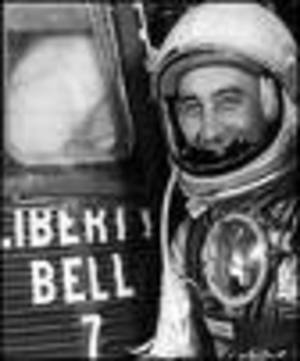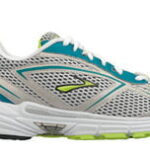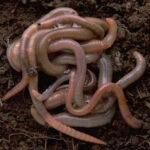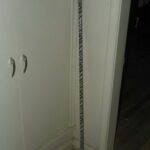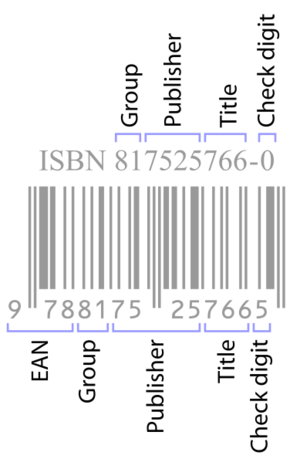If you are one of those people drawn to flea markets like birds to worms, keep in mind the axiom caveat emptor. If the price of something seems too good to be true, it generally is. For those of us in this hobby that is especially true of numismatic items offered without credible documentation.
I knew Gus Grissom and the other Original 7 Project Mercury Astronauts, as well as dozens of other astronauts who came after them. Harper and Row published my ‘The Space Program Quiz & Fact Book (ISBN 0060154543), now out of print, for which Astronaut Frank Borman wrote the introduction. I was present when more than once when Wally Schirra, Deke Slayton, et al teased Grissom about the dimes and other trinkets he took aboard Liberty Bell 7. I know the story of the dimes and the Liberty Bell 7 flight as well as anyone involved in NASA at the time.
Nonetheless, this writer has come across no less than three table vendors at flea markets in the last two years offering genuine U.S. coins and stamps which, if real, would be historic keepsakes of the U.S. space program. Mercury dimes that Astronaut Virgil I. (Gus) Grissom had taken into space with him on only the second U.S. manned space flight ever, were my most recent discovery at a table in Warren, N.J. I don’t recall what the stamps were being offered for, but the dimes, 3 of them all dated 1945, in plain cardboard holders, were priced at $50 each. And, trust me, Gus Grissom never owned these dimes.
The Liberty Bell 7 sank to the bottom of the Atlantic Ocean when it was lost during recovery after Grissom’s May, 1961 flight. Besides the one-man Project Mercury spacecraft itself, several interesting and historic items were recovered in July, 1999 when salvager Curt Newport brought the spacecraft up 15,000 feet back to the surface. For me, it was the wrapup of a saga that had begun three decades earlier.
Found in the spacecraft were three U.S. one dollar bills and at least 52 dimes from the two full roles of Mercury Dines the Project Mercury Astronaut intended to give away as mementos to the children of friends. There were also non-numismatic items such as a checklist and pencil, found in a closed pouch, used during the sub-orbital mission Grissom just before the ship sank.
The paper wrapping had long since rotted away and, according to reports by salvagers, the dimes were scattered across the floor.
The story of Grissom and the Mercury Dimes is well known among people with even the lightest interest in the space program or coins, IThe last time we spoke about the currency and dimes was during a casual meeting at Cape Kennedy less than a year before he and two other astronauts were killed in the fire of Apollo 1.
At the time, The Space Program Quiz & Fact Book was still some years in the future. But, with press credentials, and as a lifelong coin collector, I used my access to ask about Grissom’s dimes and other coins and stamps astronauts took into space. That final meeting with Grissom, and fellow Original 7 Astronaut Wally Schirra, was at the Holiday Inn bar in Titusville. It was a long-time favorite watering hole for these pilots with what author Tom Wolfe called “the right stuff.
When I brought up the dimes again Grissom groaned and Schirra let out a laugh.
“That’s old news. I’ve told you that before. Everybody’s heard what I have to say about those damn dimes.”
Nonetheless, I refused to change the subject and went on. I mentioned that even though they are popularly called Mercury Dimes, they are really Winged Liberty Head Dimes and the last ones had been made in 1945.
“So I’ve heard, many times. But we were in Project Mercury, and were the Original 7 Project Mercury Astronauts, get it?” He wasn’t annoyed, just a bit bored, it seemed, being asked to rehash the old story.
“Go ahead, Gus, tell him how those dimes almost drowned you,” Schirra prodded. “Let’s see if you can tell the same baloney the same way again, Schirra teased.
Grissom made a face, but told the story, again.
“I had sneaked two rolls of fifty dimes each with me into the space craft. I intended to distribute them to friends’ children as souvenirs. I also had three one dollar bills, a couple of small models of a Mercury space craft. They were supposed to be mine, the Liberty Bell 7, but they were just generic Project Mercury things you could buy from any hawker around this part of Florida. I also had two sets of pilot’s wings.
When the hatch door blew, the space craft started filling with water and the added weight was quickly putting a strain on the tether from the rescue chopper attempting to lift it from the sea. In seconds, literally seconds, the damn thing was impossible to lift. I knew I had to get out, because this thing was sinking, fast. And I knew those dimes and other stuff I shouldn’t have had with me were just adding to my weight, so I emptied all that stuff inside the space craft as I scrambled out. That’s it. That’s the story. Nobody ever got the dimes or other stuff.”
As noted earlier, Grissom was killed on January 27, 1967. He would have been delighted to have witnessed the recovery of Liberty Bell 7 in 1999.
Over the years I had remained in touch with several of the astronauts.Shortly after the Liberty Bell 7 recovery, I asked Schirra what he thought of the version of the story that says engineers, not Grissom, had secretly put the Mercury dimes into the space craft.
“Maybe they physically did that. But if so, they did it at Gus’ urging. Those were his dimes, no ifs, ands, or buts.”
And last year Schirra had this to say about the dimes: “Grissom would not believe that his dimes were being auctioned on Ebay for thousands of dollars. Hell, he wouldn’t even know what eBay is!”
Although NASA does not permit the sale of items carried aboard space missions, many items have found their way to market. Eleven Apollo 16 stamps, autographed by the astronauts, sold for $27,000 at auction. But a corned beef sandwich that John Young offered to Gus Grissom during a Project Gemini Mission never returned to earth for obvious reasons.
Gus Grissom’s restored Liberty Bell 7 spacecraft, as well as some of the dimes and currency recovered from it in 1999, toured the United States for three years. The artifacts now reside on permanent display at the Kansas Cosmosphere and Space Center museum in Hutchinson, Kansas.
The bottom line here is simple: if you ever come across someone selling ‘Gus Grissom’s Dimes’ for $50 you can bet the farm they are not the real McCoy.
